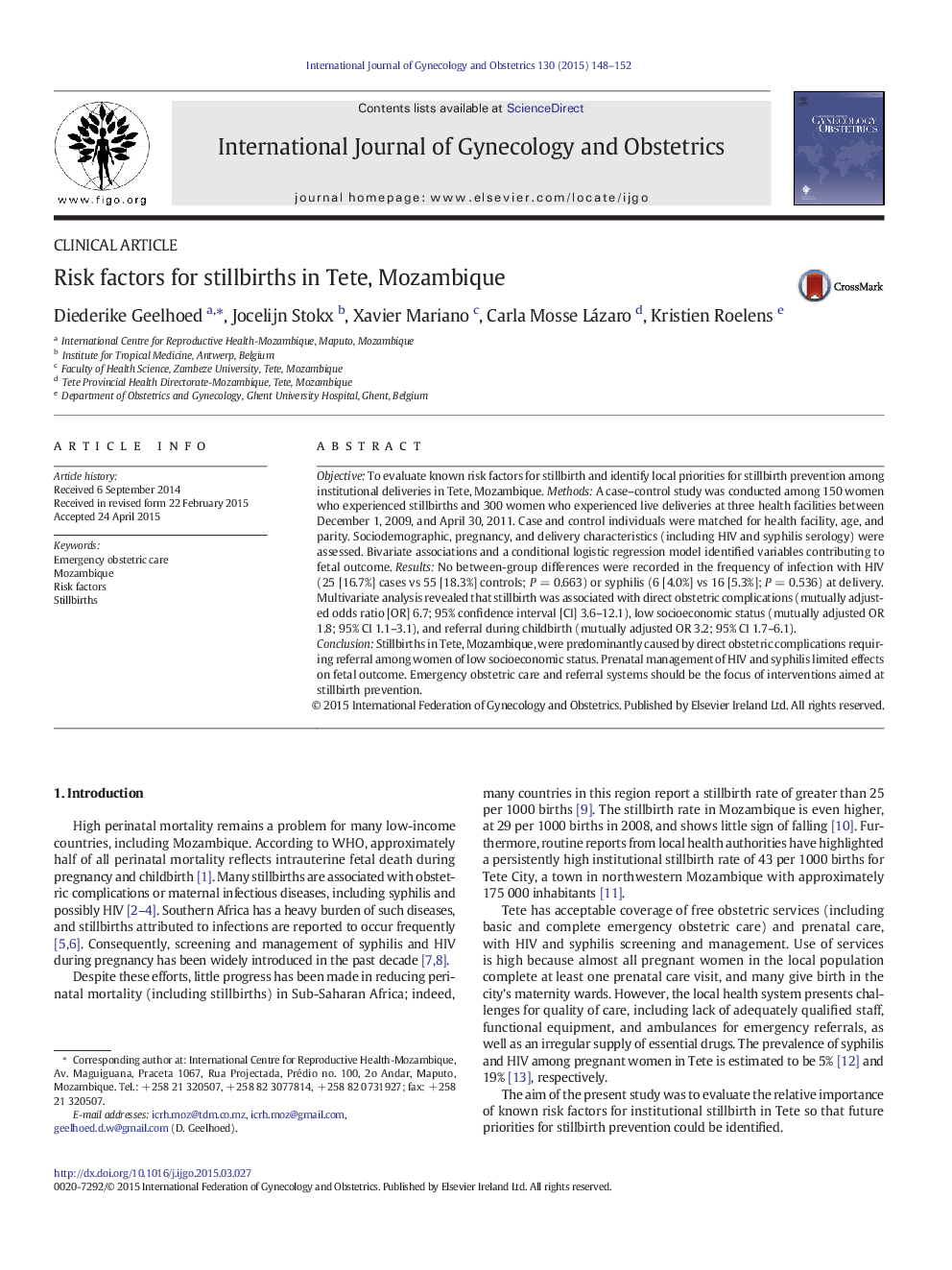| Article ID | Journal | Published Year | Pages | File Type |
|---|---|---|---|---|
| 3954091 | International Journal of Gynecology & Obstetrics | 2015 | 5 Pages |
ObjectiveTo evaluate known risk factors for stillbirth and identify local priorities for stillbirth prevention among institutional deliveries in Tete, Mozambique.MethodsA case–control study was conducted among 150 women who experienced stillbirths and 300 women who experienced live deliveries at three health facilities between December 1, 2009, and April 30, 2011. Case and control individuals were matched for health facility, age, and parity. Sociodemographic, pregnancy, and delivery characteristics (including HIV and syphilis serology) were assessed. Bivariate associations and a conditional logistic regression model identified variables contributing to fetal outcome.ResultsNo between-group differences were recorded in the frequency of infection with HIV (25 [16.7%] cases vs 55 [18.3%] controls; P = 0.663) or syphilis (6 [4.0%] vs 16 [5.3%]; P = 0.536) at delivery. Multivariate analysis revealed that stillbirth was associated with direct obstetric complications (mutually adjusted odds ratio [OR] 6.7; 95% confidence interval [CI] 3.6–12.1), low socioeconomic status (mutually adjusted OR 1.8; 95% CI 1.1–3.1), and referral during childbirth (mutually adjusted OR 3.2; 95% CI 1.7–6.1).ConclusionStillbirths in Tete, Mozambique, were predominantly caused by direct obstetric complications requiring referral among women of low socioeconomic status. Prenatal management of HIV and syphilis limited effects on fetal outcome. Emergency obstetric care and referral systems should be the focus of interventions aimed at stillbirth prevention.
